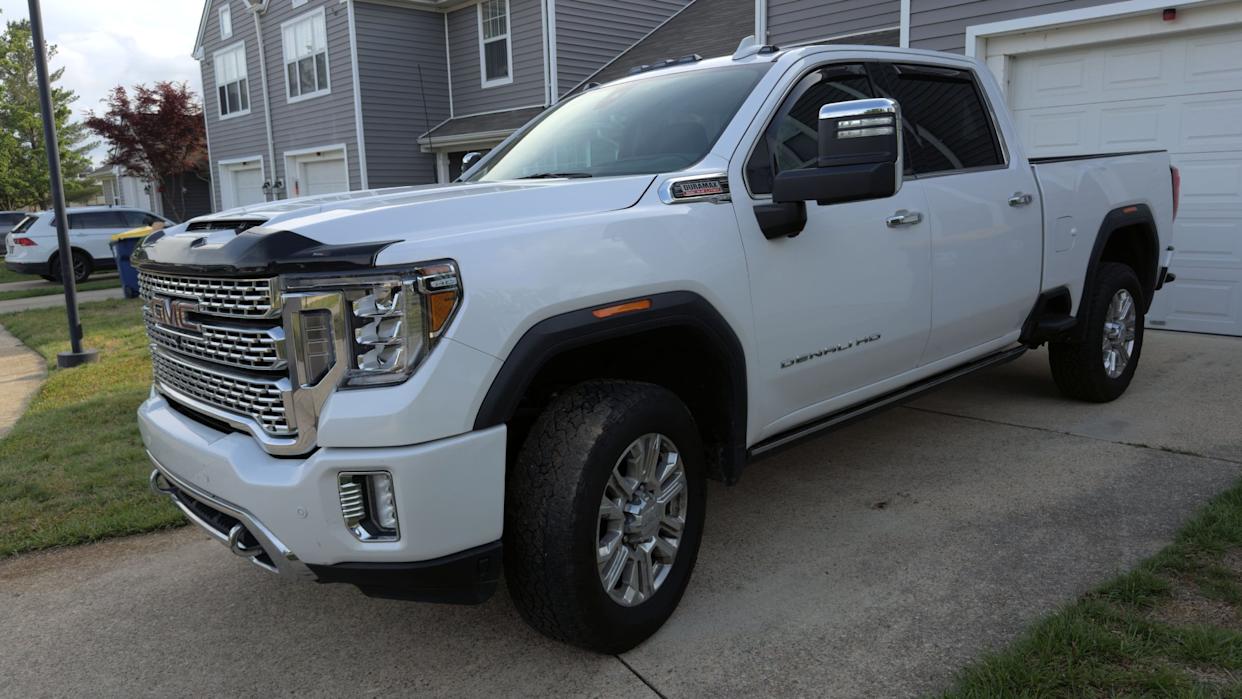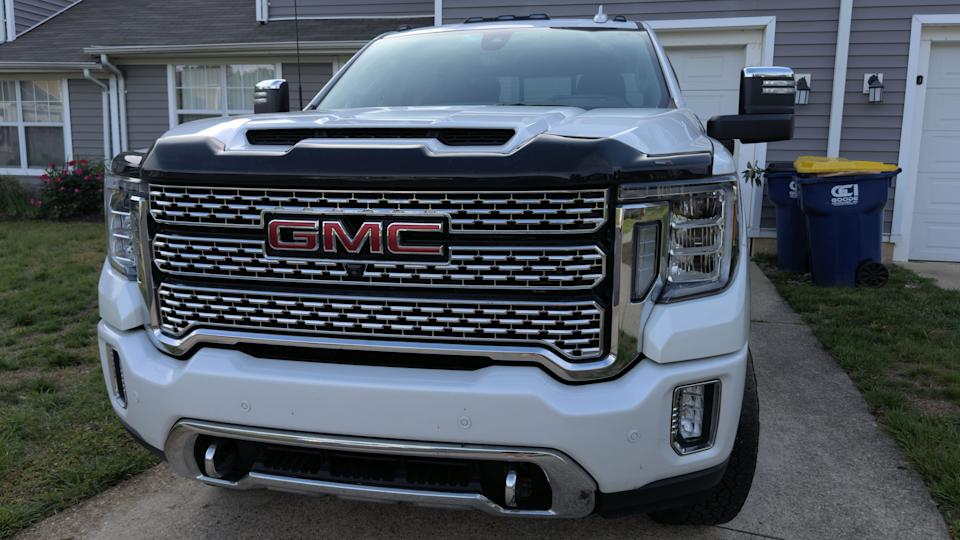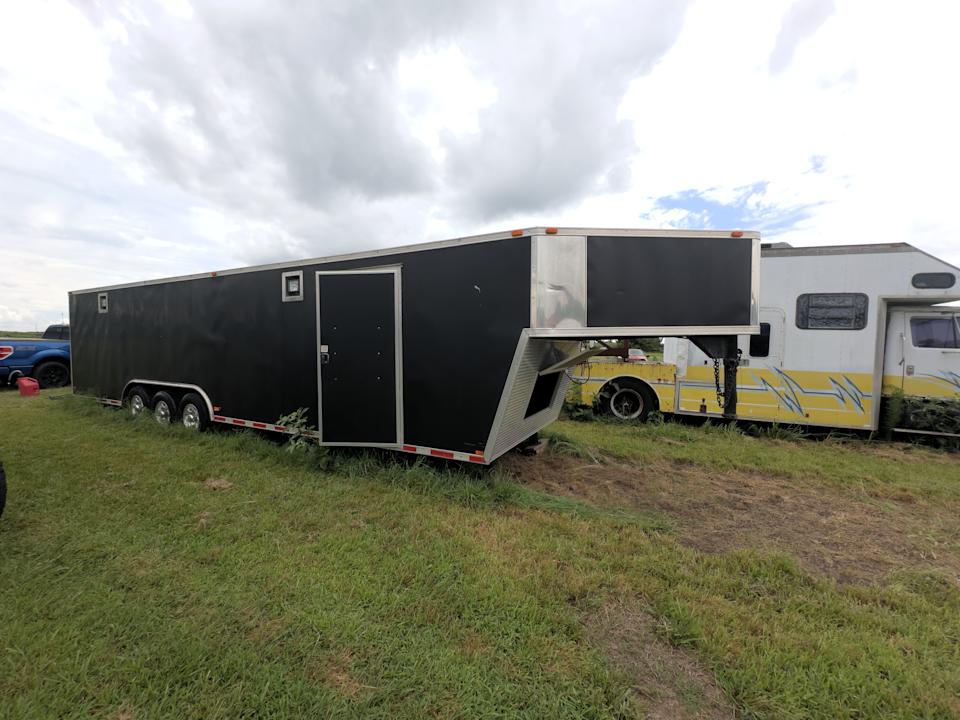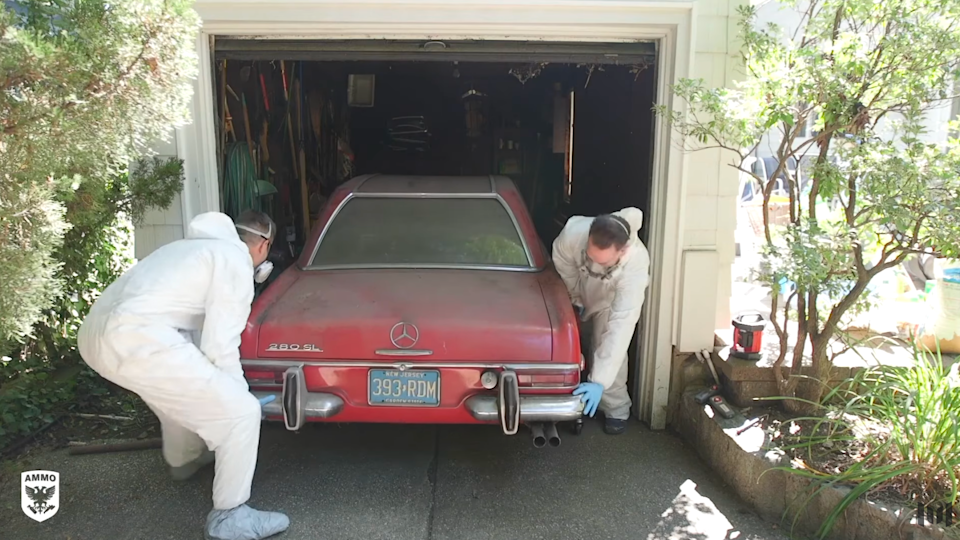
It’s been a tough couple of years for automotive quality control. Between Ford’s industry-leading torrent of recalls and Toyota’s twin-turbo V6 engine snafu, it seems everybody emerged from COVID with a plan to sacrifice durability in the name of manufacturing efficiencies. Over at General Motors, two icons of steadfast reliability—the small-block V8 family and the Allison transmission—are becoming (hopefully temporary) black eyes for a company whose trucks and SUVs are trusted by customers who need more than a simple commuter appliance.
One of those customers is Robert Shafto. He purchased a 2023 GMC Sierra 3500 with just 30,000 miles on it from a dealership in Kentucky earlier this year. When he picked it up, it was accompanied by documentation showing that the 10-speed transmission’s valve body had already been replaced under warranty.
Shafto later learned that the previous owner had traded it in after the valve body sidelined it. The dealer sat on it until a replacement part arrived, repaired it, and then listed it for sale. Shafto wasn’t too concerned by the news; the worst part was already over, right?
From a brief scan of the ‘net, you’d assume this to be true. GM recalled the 10-speed automatic in virtually everything it’s sold in, from the truck and SUV lines down to the Chevy Camaro and Cadillac CT4/CT5, but if you read the fine print, the fix only applied to trucks from the 2020-2022 model years, and was actually just a software update to prevent the affected cars and trucks from experiencing a full rear-wheel lockup should the actual culprit—the 10-speed automatic’s valve body assembly—begin to fail prematurely.
While the recall cuts off at 2022, that seems to be a practical matter rather than a reliability milestone. If you look at NHTSA’s complaint database for the 2023 and 2024 trucks, you’ll see that the bulk of reported customer issues stem from the rear axle. But unlike older trucks, far more of them remain under warranty. And since they shipped with the software update that should prevent the rear axle from locking up at speed, there’s less pressure on GM to address it as a safety concern.
Little did Shafto know, he’d be in the previous owner’s position just months later, only with a different dealership offering to take the truck in on trade. In early June, he experienced a relatively low-speed transmission hiccup. While it wasn’t a high-speed lock-up (the issue the transmission control modules were reprogrammed to prevent), it was one of the early documented signs of valve body failure—the truck’s second in under 35,000 miles.

“As of today, there is still no estimated date for the required part,” wrote Shafto on August 12 in an email to media outlets, his dealership, and GM CEO Mary Barra. “Yet despite the recurrence, GM and the dealership have again opted to replace the valve body instead of addressing the root cause.”
If you’ve been following GM’s 10-speed recall saga, you may be aware that the manufacturer just released its third revision of this valve body design, which should help ease the current backlog. But there’s a catch: It fits only GM’s half-ton, gasoline-powered trucks. GM’s 2500 and 3500 series trucks, which were part of the initial recall population, are still reliant on the band-aid; there’s no revised valve body part available.
But even if GM was in a position to offer an upgraded part, Shafto is losing faith in GM’s quality control.
“I don’t believe that this is the first redesign they’ve accomplished, so I don’t have much faith that this will fix the issue,” he said.
To make matters worse, Shafto is staring down a major move while his truck sits at the dealership, waiting for a resolution that doesn’t seem imminent.
“I am an active-duty member of the United States Air Force preparing for a Permanent Change of Station (PCS) move next month to attend Officer Training School in October,” he explained. “I purchased a trailer for my relocation, but it is now stranded four hours away because I have no vehicle to retrieve it.”

“GM’s $44/day rental reimbursement cap does not come close to covering a vehicle capable of towing a trailer, effectively leaving me without transportation,” he said. “The capped rental reimbursement appears designed to deter customers from seeking the support they deserve under warranty, placing the financial burden back on the consumer.”
Sixty days at the dealership is enough for Shafto’s truck to qualify for a buyback under Virginia’s Lemon Law (59.1-207.13.B.3), which says:
The motor vehicle is out of service due to repair for a cumulative total of 30 calendar days, unless such repairs could not be performed because of conditions beyond the control of the manufacturer, its agents or authorized dealers, including war, invasion, strike, fire, flood or other natural disasters.
GM could argue that its supply shortage is an issue beyond the company’s immediate control, but struggling to wrangle suppliers probably isn’t the sort of disaster Virginia lawmakers had in mind when they passed that particular piece of legislation. But, whether he’d succeed in pursuing a Lemon Law buyback is of less relevance to Shafto than his immediate need for a tow vehicle.
“I need a truck,” he said. “It doesn’t have to be my truck.”
“I’ve been patient and professional throughout this process, but it is clear GM is failing to take responsibility for a widespread and well-documented design flaw,” Shafto said. “Instead of issuing a recall or developing a permanent solution, the company continues to rely on temporary band-aid repairs that do not last.”
“From my perspective, it feels like GM’s approach is to outlast the warranty period and avoid the financial responsibility of a proper fix,” he told The Drive. “That’s not just bad for me, it’s bad for every owner who relies on these trucks.”
The Drive has been in contact with GM throughout the process of writing this story; we will let you know if there are further updates.
Has your heavy-duty GM truck been in the shop waiting for a valve body replacement? Let us know at [email protected].








Comments